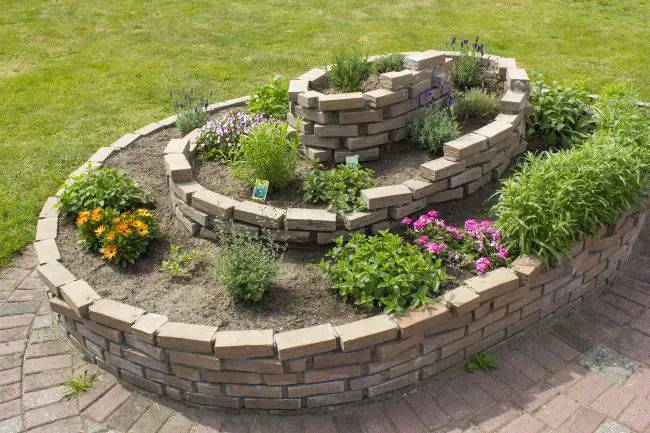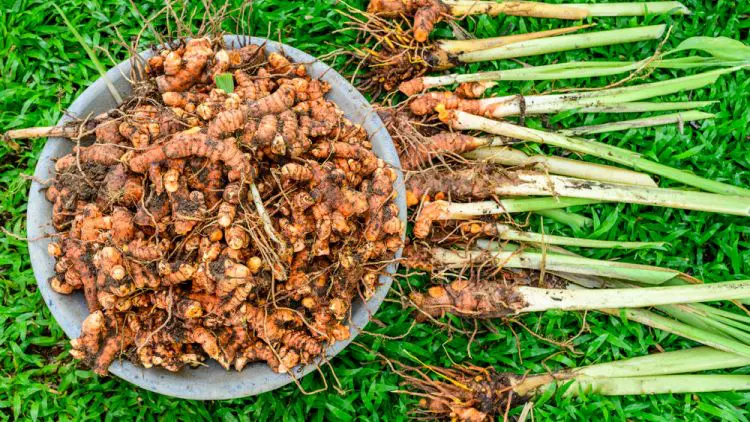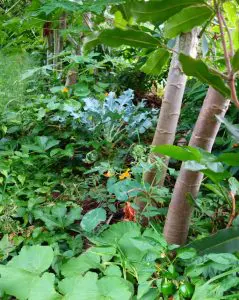
No matter where you live, as a gardener you always have some sort of constraints. Whether it’s climate, space, time, energy or just plain personal preference, we can’t do everything. There are literally hundreds of different herbs you can try growing, but realistically we all have to make choices about what to grow and what not to grow. Here we make it easy for you- we’ve chosen our top 12 herbs and spices you should always grow.
Basil
There are numerous varieties of both annual and perennial basil to try growing, and each has a different flavour and strength. All are extremely useful in the kitchen, and can be dried, eaten fresh or made into sauces like pesto.

Basil is traditionally paired with tomatoes, both in the kitchen and in the garden. Planted near tomatoes, it is said to improve a tomatoes flavour and deter pests. Basil will happily grow in pots, garden beds and in the ground. This frost-sensitive herb likes warm temperatures with a sunny position and annual varieties self-seed readily.
Coriander
Whether it’s a herb or a spice, whether you love it or hate it, there’s no doubt that coriander is here to stay. Despite being associated with Mexican food, coriander is known and used world-wide. It is native to southern Europe, North Africa and Asia, and has been continually used for thousands of years.

Also called cilantro in various parts of the world, coriander produces edible leaves and seeds. The leaves are commonly chopped and used in salads and in various Asian dishes, while the seeds are great for preserving & flavouring meats like biltong. Coriander seeds also make for a decorative and flavourful addition to preserves like dill pickles.
Kaffir Lime
If you’ve ever had a Thai green curry, you’ve probably experienced finely chopped kaffir lime leaves. They have a flavour all their own, and give any dish a super-citrussy hit.

The rind of the fruit can be used to flavour food too, and can be substituted for lemon rind in a pinch. Grown more for the unusual ‘double leaves’ than their fruit, kaffir lime trees are as easy to grow as any other citrus and make great container plants if you’re short on space.
Turmeric
Turmeric is a subtropical spice plant that grows its bulbs as an underground rhizome, much like ginger. Planted in spring and harvested in late summer, it’ll thrive on neglect as long as it gets enough water. Be sure to keep enough bulbs aside for planting more in the following season.


If you love a turmeric latte, imagine how much better it would be if you grew your own turmeric plants and could provide the spice yourself! Fresh turmeric is easy to add into a wide variety of foods, too. All you need to do is peel then finely grate turmeric fingers straight into a meal (as you would ginger or garlic). I add turmeric to pizza, stews, soups, and even spaghetti sauce. With both antioxidant and anti-inflammatory properties, turmeric is thought to have potential benefit for a wide range of medical conditions. Here’s our complete guide on how to grow turmeric.
Ginger
Just like turmeric, ginger is a heat-loving rhizome spice that can be adapted for cool climates by growing it indoors in pots. Prized for both its taste and health benefits, ginger lends itself to a huge range of food, drink & medicinal applications.


Ginger can be harvested & used at any time during its long growing season. When picked early it is called ‘young ginger’, and will have a milder taste than mature ginger. You can grow ginger anywhere as long as it has good drainage. While it certainly likes plenty of water, it’s important that the bulbs are prevented from rotting. Here’s our lowdown on how to grow ginger.
Oregano
Oregano is a herb that is most often used in its dried form, as this is when it develops the best flavours in food. Native to the sunny, rocky slopes of the Mediterranean coast, oregano is a member of the mint family and prefers a warm temperate climate. In the subtropics it will die back in winter and re-grow in spring.

It grows very well in containers (I grow mine in old rubbish bins!), but does equally well in raised beds and in the ground. Here’s our video with all the details on growing oregano.
Parsley
It probably goes without saying that parsley is a herb garden essential. Whether you prefer the flat or the curly leafed variety, parsley is certainly one of the worlds best-known herbs. Just like oregano, parsley can be used fresh in soups, salads and meat dishes, and if you grow too much you can always dry it for later use.

Parsley prefers a temperate climate so does need a bit of management if you’re growing it in the subtropics. It will struggle through a humid summer, so keep the water up to it and protect it from the harsh afternoon sun where possible.
Bay Leaf
This is not a plant that you see for sale very often, but it’s well worth growing if you can find one. The aromatic leaves from this slow-growing tree are used to flavour stews, curries, casseroles, lamb shanks and sauces.

Some believe that the dry leaves are more fragrant & less bitter than fresh leaves. Personally I’ve never noticed much difference, and am always happy to pluck fresh leaves straight off my tree as & when I need them.
Mint
This perennial herb is a must for every vegetable garden. It’s easy to grow in most climates and is versatile in the kitchen, providing a flavour base in drinks and confectionery.

The most important thing to know about mint is that it needs to be contained. Mint is a vigorous plant that spreads via underground runners, so is difficult to remove if you plant it in the ground in the wrong position. In the subtropics, grow it in part sun and keep the water up to it & your mint will thrive.
Chives
I feel like chives get a bit of a raw deal on the gardening front, as they’re so unassuming as to be overlooked. Chives are a wonderful short-lived perennial & a great food plant to have on hand, especially if you run out of something. They can be substituted for onions or garlic in a pinch, need little cooking, and add a nice splash of green to any dish.

Surprisingly hardy, you could almost say that chives will grow anywhere/anytime. They are happy in both containers and in the ground, and can cope with full sun to almost full shade. Chives of any variety make a low-maintenance understorey plant.
While these are our top 12 herbs & spices you should always grow, there are so many more to try. Why not check out our video to see Marks extra recommendations!












